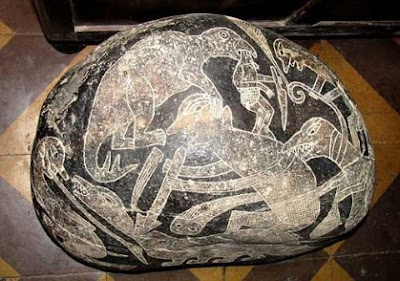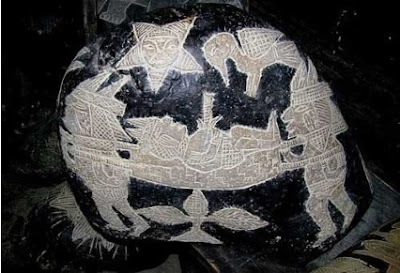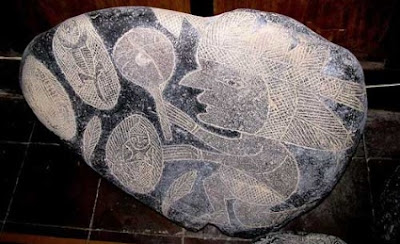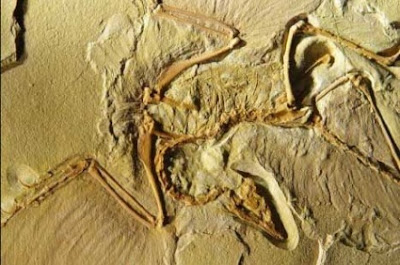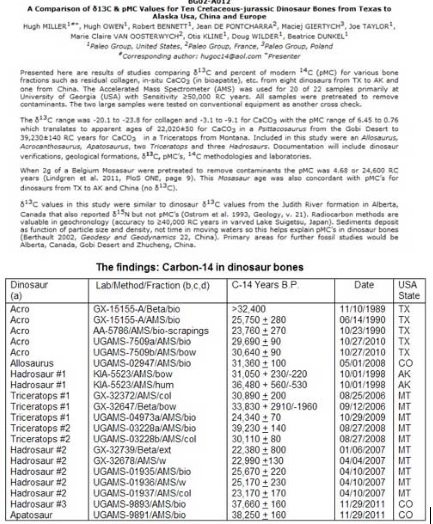An Ancient Canal - Matamoros, Mexico
This is an ancient (silted over, filled in) canal leading from the center of Matamoros , Mexico out to the Gulf. The original ocean breakwaters are worn away and nearly disintegrated, and the canal proper inland has been nearly obliterated by sand and debris wash that looks like tsunami debris. In any case, the sand and tide and tidal incursion as tsunami debris has covered the first 11 miles of this system. The first five miles from the current ocean shore has been almost completely obliterated by high dune like structures of what appears to be tsunami debris.
This is an ancient (silted over, filled in) canal leading from the center of Matamoros , Mexico out to the Gulf. The original ocean breakwaters are worn away and nearly disintegrated, and the canal proper inland has been nearly obliterated by sand and debris wash that looks like tsunami debris. In any case, the sand and tide and tidal incursion as tsunami debris has covered the first 11 miles of this system. The first five miles from the current ocean shore has been almost completely obliterated by high dune like structures of what appears to be tsunami debris.
From the ocean, and what was once a large harbor area, the canal continues about 26 miles inland to the now downtown areas of Matamoros, making it look for all appearances as if it were of modern origins. However it is in fact a much filled in, degraded and old system.
At the ocean side shore, the debris field is estimated to be 12’ to 18’ in height, for more than a mile inland, with continuing debris wash and upheaval for an additional 5.5 miles inland. Some erosion and other disturbance patterns are visible for another seven miles inland. The most important features for dating this anomaly is the tsunami debris field and the ocean inlet (harbor area) as defined by the still viewable breakwater jetties. Though degraded and eroded, they still show the harbor entry area.
Photo courtesy of NASA. Coordinates: 25°38'48.27"N, 97°14'35.82"W. Set 'Historical Imagery' to 11/18/2008
This canal, about 20 miles south of the Rio Grande, in a straight line from Matamoros, which faces the Mexico-US border, is about 26 miles long to the ocean exit. It has a split (circular) feature at its head (enclosing the old city center), suggesting freshwater delivery to the city’s inhabitants, agricultural irrigation, aquatic farming, small craft commercial use, and probably a defense-security mechanism. It averages about 46' in width (nearly 60’ at the harbor, 55’ twelve miles inland, and about 35’ near the metropolitan area) between two high berm banks, and expected to be about 6' to 9' deep. If the canal's total length is 26 miles, at an average width of 40' and a depth of 9', original construction would have removed about 210,000 cubic yards of material per mile, or about 6.6 million cubic yards. At a cost of $10 per cubic yard, (in today’s dollars) it would cost about $66 MILLION in today's dollars to complete the entire project.
This canal system, like the North Key Largo canal system was in use when the Ocean Level was within 1 foot of its current level. Otherwise, the ocean opening would not be as wide nor at the location it is now. That means this canal is also more likely rather than less likely to have been a victim of the Axis Tilt Event, (the same global catastrophe that caused the Santorini explosion in the Mediterranean, and probably the breach of Gibraltar Strait and many other events.)
It certainly is NOT 7,000 years old, because the secondary tidal shelf from 7,000 years ago is about 1,500 feet offshore. So this system was built when the tidal level was within 1 to 1.5 feet of its current level, or something not earlier than 5,500 years ago. I don’t think it is of post Columbian age, as the erosion level is too significant to be within the last 150 to 200 years.
Photo courtesy of NASA.
This south breakwater wall appears to be significantly eroded. Made of large boulders, the breakwater wall is degraded to the point of being split into two sections near shore, and the original breakwater, harbor and canal have completely disappeared for about a mile under sand and other buildup, which appears to be a tsunami debris field. During our recent or modern history there has not been a tsunami large enough on the gulf coast to leave tsunami debris field 1.5 miles inside the shoreline that is several meters deep, which is exactly what is represented here.
Photo courtesy of Google Photos
Distance between the two breakwater walls is roughly 800 feet, suggesting it was probably servicing a harbor opening rather than just the small 40’ wide canal that runs inland in a straight line for 26 miles.
It is not known whether the north breakwater wall was originally longer than its current degraded length.
From a design engineering standpoint, it may have been longer due to the fact that it angles south by southeast more steeply than the southern breakwater wall angles toward the northeast, suggesting the prevailing winds and tidal-storm surge were predominately from the south-southeast when it was built. The longer southern breakwater wall would clearly protect the canal-channel entrance. It is an open question as to why the northern wall angles so steeply south, and whether it was originally much longer. My opinion is that it was in fact longer, but was eroded and degraded from the tsunami that probably arrived from the Northeast.
Moving inland from the Atlantic shore and the potential harbor opening, the tsunami force was so great that it all but obliterated the canal, eroding all but vestiges of its former structure for eight to nine miles inland.
Photo courtesy of NASA
There are outlines of rectangular forms on the ground facing the banks of the canal 3 miles inland that suggests some form of buildings or structured land use prior to the devastation. All remnants of that use seem to have disappeared with the extreme nature of the destruction. About 12 miles inland is where the heavy wash and residue seems to diminish. There is no apparent effect further inland. A twelve mile incursion with a heavy shore side debris field depth measured in meters suggests a very strong and very high tsunami. In my estimation, the tidal height may have been measured in the low hundreds of feet.
Photo courtesy of NASA
This canal system appears to have been built, and or in use long before modern development. Most of it seems to represent a period in time when the tidal shoulder was at most about 1’ lower than it is today, which suggests this system was built before the Axis Tilt Event of 3,450 YBP, and then was abandoned following that event.
The building method was double berm, or removing material from the canal way depositing the residue on the closest bank. This is a method used up to and including modern times. It is typical when the cutting machine is a single long or goose-neck excavator that sits on a swivel platform, usually on the uncut bank in front of the canal. It is also used on floating platforms.
It would be very instructive to do C-14 and other tests on the berm piles for exact date of build and use.
On a side note, it seems to me, if the Matamoros canal can be carbon dated to before 3,450 years ago, it might be well worth the effort to also carbon date the Brownsville canal on the US side of the border, as that canal, though much larger, has been dug into the same location around the US side of the Matamoros, Mexico border.
Photo courtesy of NASA
This canal system appears to have been built, and or in use long before modern development. Most of it seems to represent a period in time when the tidal shoulder was at most about 1’ lower than it is today, which suggests this system was built before the Axis Tilt Event of 3,450 YBP, and then was abandoned following that event.
The building method was double berm, or removing material from the canalway depositing the residue on the closest bank. This is a method used up to and including modern times. It is typical when the cutting machine is a single long or gooseneck excavator that sits on a swivel platform, usually on the uncut bank in front of the canal. It is also used on floating platforms.
It would be very instructive to do C-14 and other tests on the berm piles for exact date of build and use.
On a side note, it seems to me, if the Matamoros canal can be carbon dated to before 3,450 years ago, it might be well worth the effort to also carbon date the Brownsville canal on the US side of the border, as that canal, though much larger, has been dug into the same location around the US side of the Matamoros, Mexico border.
Photo courtesy of NASA
Up close, the Brownsville Canal has many features that suggests it might very well be built on a much older degraded system. Particularly when assessing the oil industry tanks and storage area at the head of the canal. Most of the docks and quays are very regular and geometric, as if they had been built within the last 100 years of the oil industry’s use of the location as a refinery area and transport hub for moving petroleum out of the Texas oilfields.
Photo courtesy of NASA
Further back toward the ocean, many of the angled cuts that are usually quays, are very degraded and just have the appearance of being much older with uneven edges and heads. They are currently being used as a graveyard dismantling location for decommissioned Navy ships.
Even further back toward the ocean opening there are what appears to be cuts or quays that have completely silted over and filled in leaving faint outlines of their once useful presence. This area has almost an eerie resemblance to the the washed out areas of the smaller eastern Matamoros canal near the tsunami zone.
Photo courtesy of NASA
The Brownsville canal is about 1,550’ wide and services Aircraft Carriers so it is presumably over 40’ deep. One of the issues from an Engineering standpoint is why a large, wide canal servicing Navy Carriers, was built some 17+ miles inland simply to load (not off load) petroleum. Some time later, as an afterthought, decommissioned Navy ships appeared, using the system as a junk-salvage yard. This is a gigantic project to build, consisting of a canal 1,550’ wide by 40’ deep, which equals 62,000 cubic ft of material for every linear foot of canal. 1 Mile equals 317,440,000 cubic feet of material, which reduces to 35,271,000 cubic yards. At a conservative $8.00 per cubic yard, in today’s Corp of Engineer’s bid averages for work of this nature, a single mile costs $282 Million dollars, and the total 17 miles of this canal represents a cost of about $4.8 Billion (with a ‘B’) adjusted to today's dollars.
As that is such a gargantuan sum for any Corporation or group of Corporations, or Government entity to fund, particularly when the oil could be moved via pipeline to a harbor much closer to the ocean for lots less money, it should be quite simple to find where and when that budget was authorized, by who, either private industry, or the Corp of Engineers. Such documentation does not appear to exist.
Surprisingly there is no record of a project of that magnitude in any archives I have researched. There are much much smaller budget authorizations to “dredge’ and clean out certain sections of the Brownsville canal, and to build, rebuild or repair causeways and breakwater walls, but nothing to Engineer, Design and Build this project from scratch. It isn’t that we are incapable of building it in the last 120 years, because we are, but there just is no record that we, in fact did. And money of that magnitude does not just disappear down some bureaucratic rat hole.
In conclusion, portions of the Brownsville canal looks for all intents and purposes, to have been originally built and used around the time the Matamoros canal was in use, sometime before 3,450 YBP.
Further information on the devastation of the 3,450 YBP event can be seen on my blog here under “Earth’s Axis Tilt” from Dec, 2014
Other work and papers are available on my Academia website here:
John Jensen
May 2017













